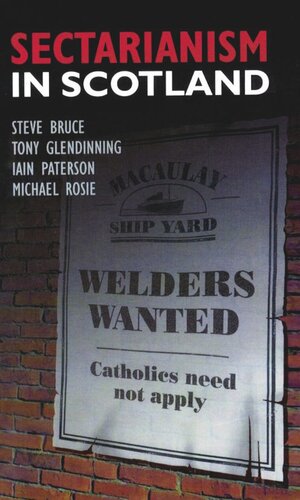

Most ebook files are in PDF format, so you can easily read them using various software such as Foxit Reader or directly on the Google Chrome browser.
Some ebook files are released by publishers in other formats such as .awz, .mobi, .epub, .fb2, etc. You may need to install specific software to read these formats on mobile/PC, such as Calibre.
Please read the tutorial at this link: https://ebookbell.com/faq
We offer FREE conversion to the popular formats you request; however, this may take some time. Therefore, right after payment, please email us, and we will try to provide the service as quickly as possible.
For some exceptional file formats or broken links (if any), please refrain from opening any disputes. Instead, email us first, and we will try to assist within a maximum of 6 hours.
EbookBell Team

5.0
58 reviewsGBS_insertPreviewButtonPopup('ISBN:9780748619115');
Is Scotland a sectarian society?
Scotland is divided not by religion as much as by arguments about the enduring importance of religious divisions. The 'curse' of Sectarianism is debated in the Parliament, the General Assembly and in the media. What we have not had until now is a serious assessment of the evidence.
This book tests the rhetoric with historical and social scientific data, describing and explaining the changing pattern of relations between Catholics and Protestants over the 20th century. It concludes that Catholic integration in Scotland has been far more successful than most commentators would have us believe. While there were once deep social, political, economic and cultural divisions, these have now all but disappeared. In Scotland's increasingly secular society, religious identity has steeply declined in social significance.
The book is informed by both a considerable body of evidence from new historical research and major social surveys, and by the authors' understanding of what the mixing of religion and politics looks like elsewhere - in America, Australia and New Zealand, as well as in Ulster. Presenting a reasoned argument and up-to-date information, the book aims to contribute to a better-informed view of sectarianism in Scotland.
Key Features